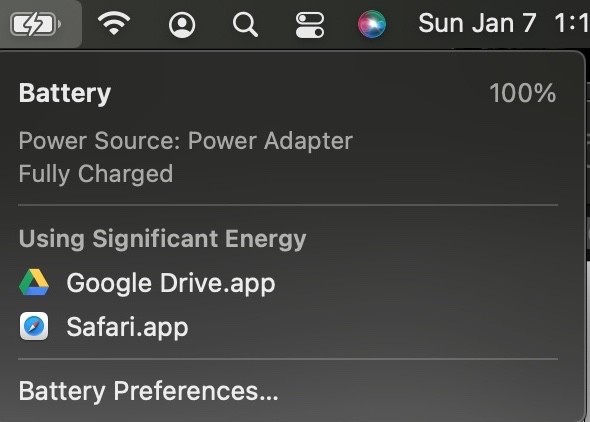Charging your MacBook is generally a straightforward process, but sometimes you might encounter situations where your Mac doesn’t seem to charge as expected. Understanding how Mac battery charging works, especially features like Optimized Battery Charging, is key to ensuring your device is powered up and ready to go when you need it. This guide will delve into the intricacies of charging your Mac battery, troubleshoot common issues, and explain features designed to prolong battery health.
Understanding Optimized Battery Charging on your Mac
Apple’s Optimized Battery Charging is a smart feature designed to extend the lifespan of your Mac battery. Instead of always charging your battery to 100%, it learns your daily charging habits and may intentionally delay charging past 80% in certain situations. This is because keeping a battery at full charge constantly can contribute to faster battery degradation over time. By managing charging in this intelligent way, Apple aims to maintain your battery’s health for longer.
This feature is generally beneficial, but what happens when you need your battery charged to full quickly, or if you encounter issues where charging options seem to be missing?
The Case of Missing Charging Options on Older Macs
Some users have reported situations where they cannot find the “Charge to Full Now” option or the ability to deselect “Optimized battery charging” in their Mac’s battery settings. This issue seems to be more prevalent on older Mac models, particularly those with Thunderbolt 2 ports or earlier.
According to discussions in online forums, it appears that these advanced battery management features and their associated user controls may not be fully available on older hardware. While Optimized Battery Charging might still be active in the background to improve battery longevity, the user interface elements to manually override or adjust these settings might be absent. This can be frustrating when you need a full charge promptly and can’t find the expected controls.
Troubleshooting Steps When Mac Charging Options Are Missing
If you’re facing a situation where you can’t find the “Charge to Full Now” option on your older Mac, here are a few troubleshooting steps you can try:
1. Resetting the SMC (System Management Controller)
The SMC is responsible for managing various hardware functions on your Mac, including battery management. Resetting the SMC can sometimes resolve unusual battery behavior. The process for resetting the SMC varies depending on your Mac model (whether it has a removable battery or not, and if it uses Apple silicon or an Intel processor). Refer to Apple’s official support documentation for the specific steps for your Mac model by searching “reset SMC Mac” on Apple’s support website.
2. Booting into Safe Mode
Starting your Mac in Safe Mode can help diagnose software-related issues. Safe Mode prevents certain software from loading at startup, which can help determine if a software conflict is interfering with battery settings. To boot into Safe Mode, restart your Mac and immediately press and hold the Shift key until you see the login window. Once in Safe Mode, check if the charging options are visible. If they are, the issue might be due to a software conflict in normal mode. Restart your Mac normally to exit Safe Mode.
3. Battery Drain and Recharge Cycle
A simple workaround, although not a direct solution to accessing missing settings, is to let your battery drain to a lower level (ideally below 20%) and then recharge it. Users have reported that allowing the battery to discharge and then recharge can sometimes trigger a full charge cycle to 100%, even when Optimized Battery Charging is active. This might take several hours for a complete recharge.
When to Consider Hardware Limitations and Upgrading
It’s important to acknowledge that hardware limitations can play a role in the availability of certain features. If you have an older Mac, particularly one predating Thunderbolt 3, it’s possible that the advanced user controls for Optimized Battery Charging were not implemented in the hardware or firmware.
In such cases, while the battery might still benefit from underlying optimized charging processes, the manual override options might simply not be available. If having granular control over battery charging is crucial for your workflow, or if you consistently encounter battery-related issues, upgrading to a newer Mac model with more advanced battery management features and user controls might be a viable long-term solution.
In Conclusion
Charging a Mac battery should be a seamless experience. Understanding features like Optimized Battery Charging and knowing basic troubleshooting steps can help you manage your device’s power effectively. While older Macs might lack some of the newer battery setting controls, applying workarounds like SMC reset or battery drain cycles can sometimes help achieve a full charge. For users requiring the latest features and controls, considering a hardware upgrade might be the ultimate solution.
